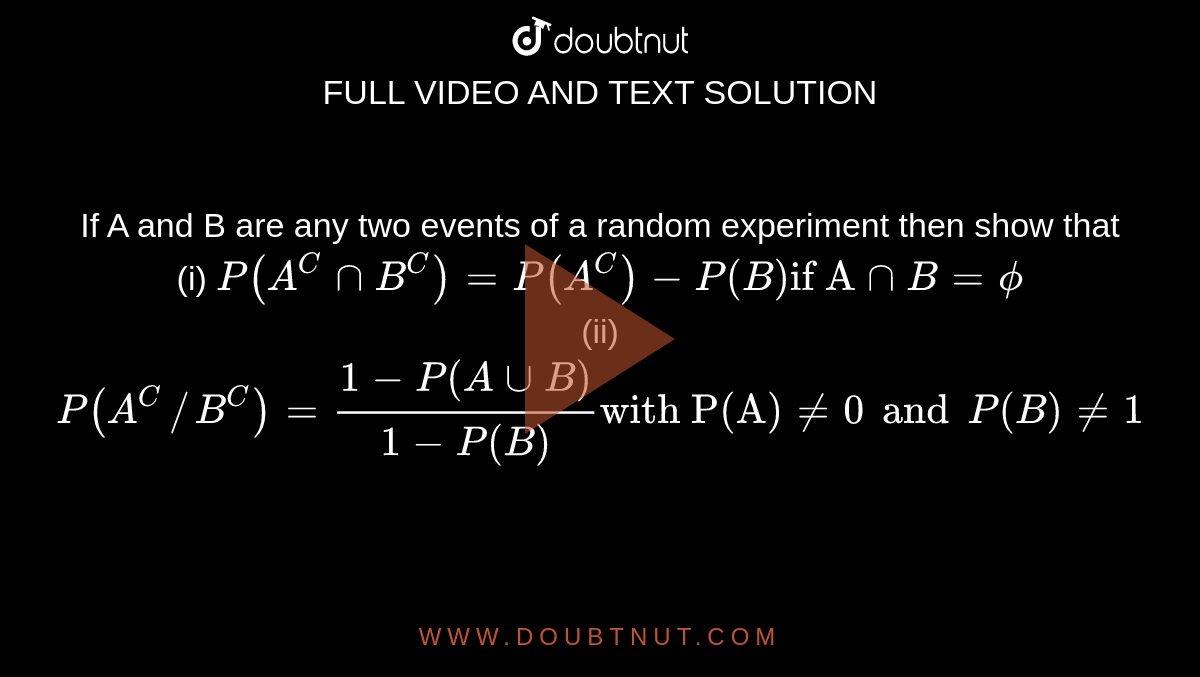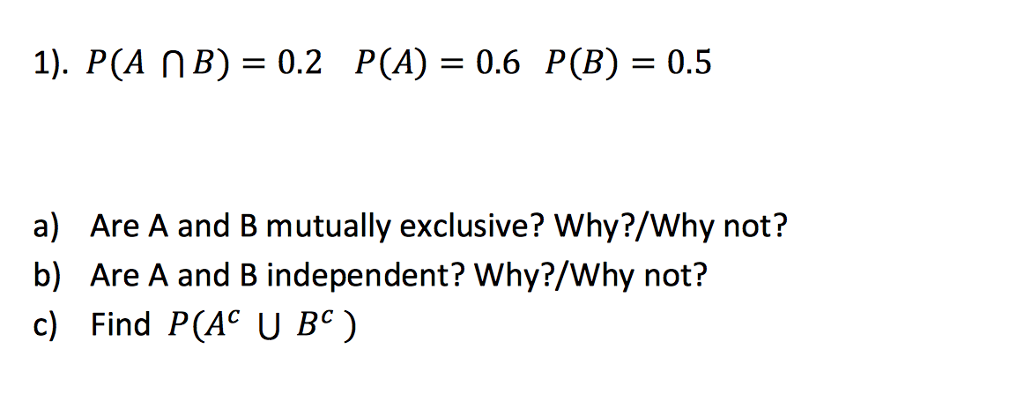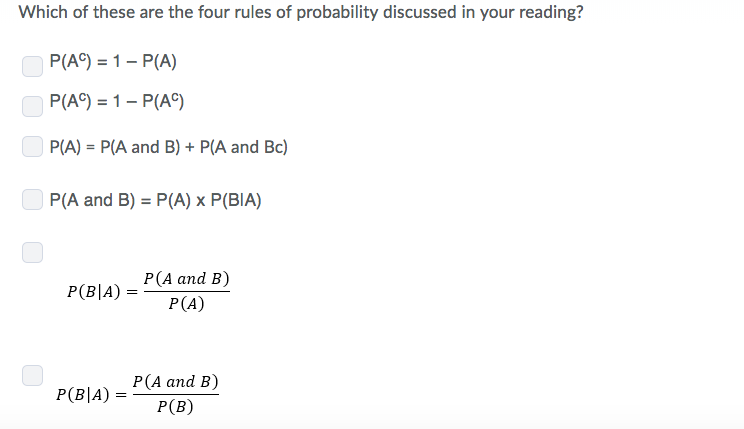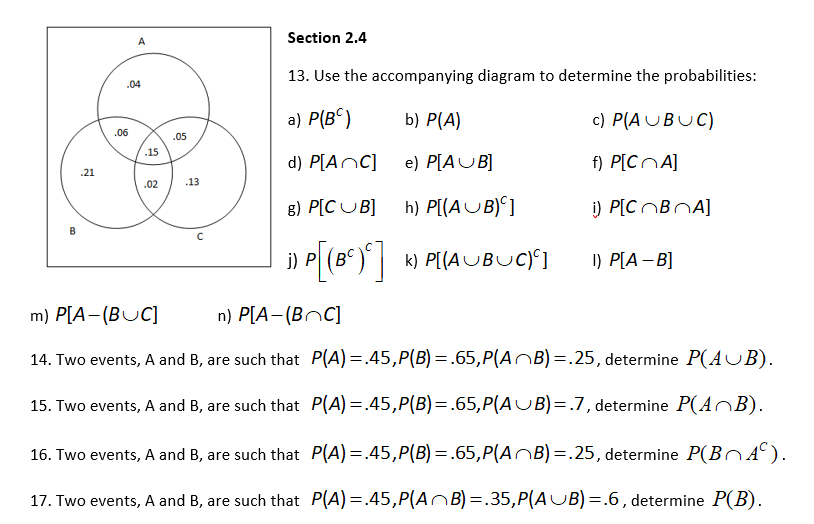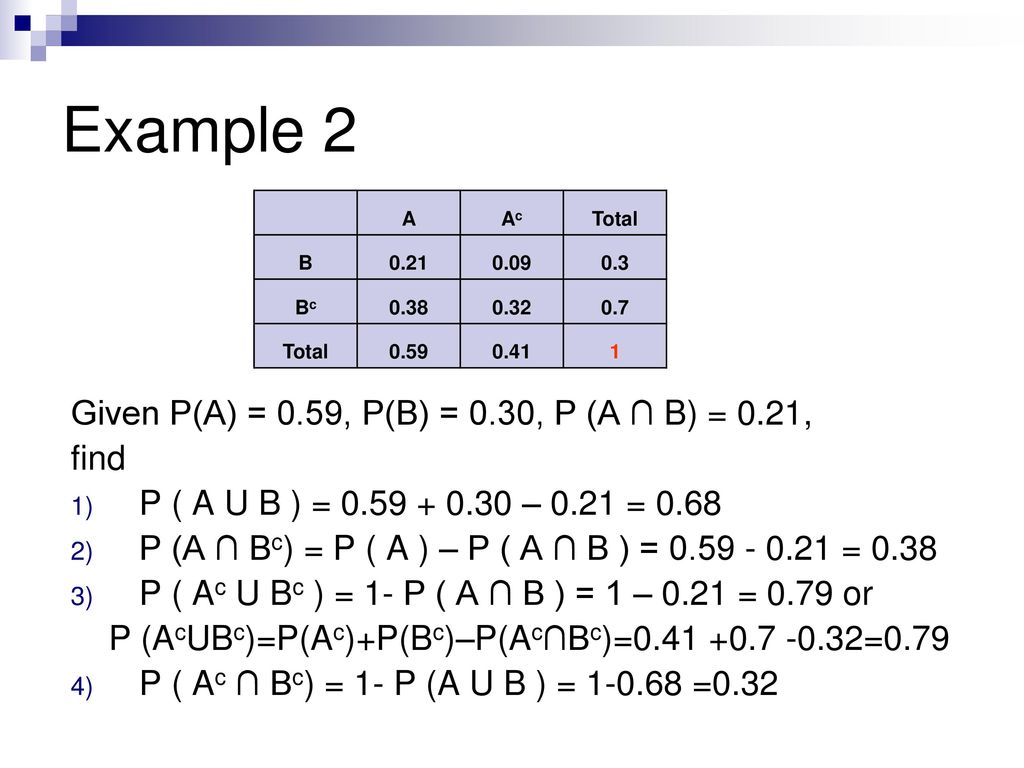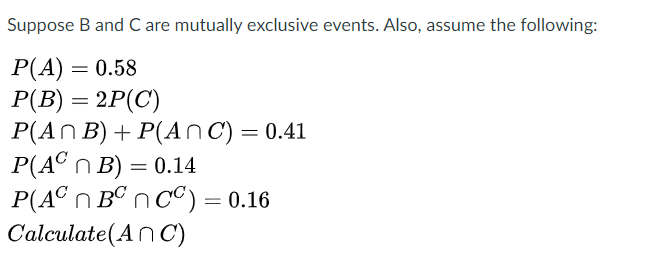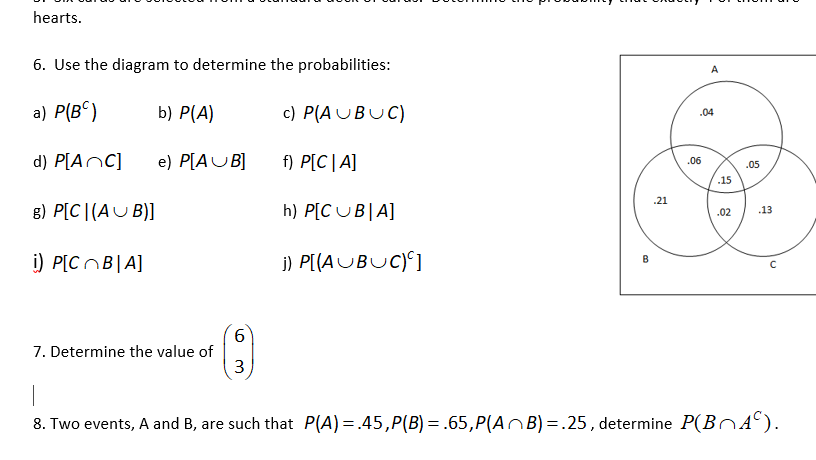
SOLVED: Hide hint for Question 5 (AU B)C Ac n Bc (AnB)c = Ac U Bc P(Ac) = 1 P(A) P(AU B) = P(A) + P(B) P(AnB)
Exercise 1: Prove the De Morgan's Law (A ∪ B) c = Ac ∩ Bc Solution: x ∈ (A ∪ B) c ⇔ x /∈ A ∪ B ⇔ x /∈ A and

SOLVED: Let Aand Bbe two mutually exclusive events such that P(AC) = 0.8, P( BC) = 0.6 Find P(A U B): P(A u B) = 0.4 P(A u B) = 0.6 P(A U B) = 0.8 P(A U B) = 0.2
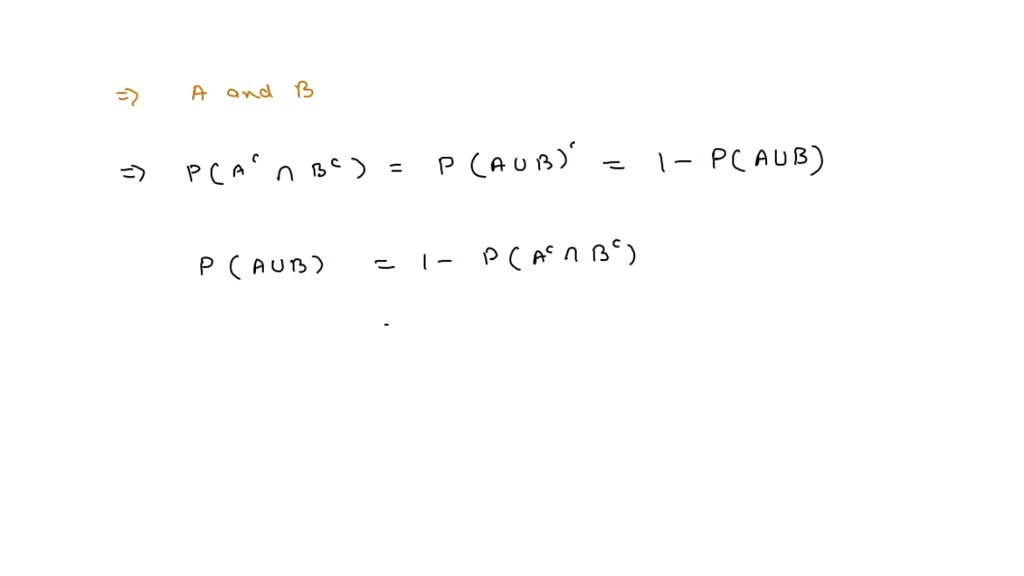
SOLVED: Let A and B be events such that P(A) = 1 2 = P(B) and P(Ac ∩ Bc ) = 1 3 . Find the probability of the event Ac ∪ Bc.
Probability (statistics): Could you explain why P (A∪B∪C) = P(A) +P(B) +P(C) −P(AB) −P(AC) −P(BC) +P(ABC)? - Quora

CHAPTER 3 Probability Theory Basic Definitions and Properties Conditional Probability and Independence Bayes' Formula Applications. - ppt download
